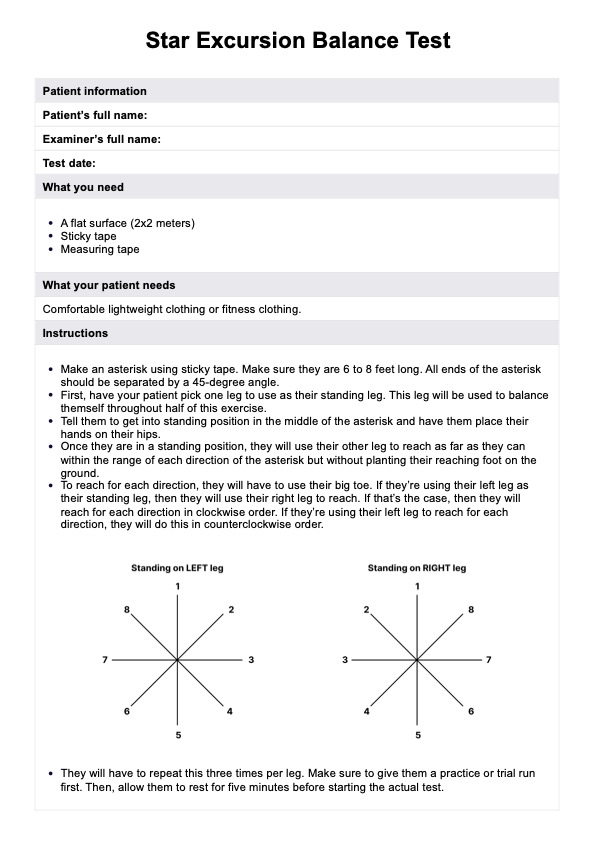That depends on the patient performing it and the conductor measuring each reach attempt. It can take 5 to 15 minutes, but don’t be surprised if it takes a little longer.

Star Excursion Balance Test
Need to assess the balance and stability of your patient? Then one of the tests you can administer is the Star Excursion Balance Test! Learn more about it by reading this guide!
Star Excursion Balance Test Template
Commonly asked questions
No. It merely assesses the balance of the patient. If they have balance deficits, there might be certain factors causing this, some of which might be actual injuries. In order to better say that such suspicions are true, it’s best to conduct other tests, including imaging tests to confirm or refute suspicions brought out by the Star Excursion Balance Test results.
It is generally safe, but there is a certain risk of falling given that balance is involved. While performing the instructions, the patient may fall, so it’s best for the conductor to be alert to provide any support should they show signs that they are about to fall. Conductors can have assistants conduct the test alongside them to have more ways to provide support, if ever.
EHR and practice management software
Get started for free
*No credit card required
Free
$0/usd
Unlimited clients
Telehealth
1GB of storage
Client portal text
Automated billing and online payments











